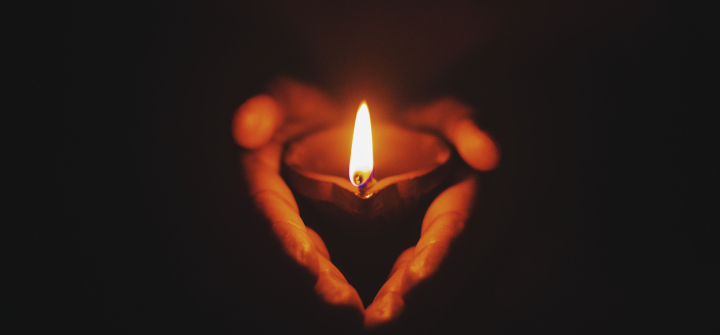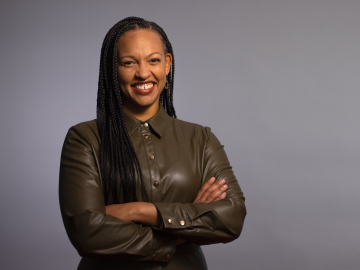Stand Up
The story I’m going to tell you is a story I never tell. Because it can sound like it’s about flags and patriotism and it is to some extent, but it’s about something much more fundamental. On some level, I like the idea of telling the stories we think we can’t, because those stories have a way of revealing more about who we are and helping us really learn from one another in a more meaningful way.
So let me begin. The high school I attended, Benjamin Franklin, was a predominantly white exam school requiring an IQ and entrance exam for admittance. The year I entered was the first year they accepted ninth graders. My incoming class had me and three other Black kids, and as few as we were, we never ended up in classes together. Thus, in my sophomore homeroom class I was the only Black kid, as usual.
In homeroom in those days—and those days were the early 1970s—our twenty-five desks were in tidy rows and the homeroom teacher seated at a desk in the front of the room would call the roll and then the loud speaker would start blaring announcements and prompt us to stand up for the pledge of allegiance.
I don’t remember the name of my sophomore year homeroom teacher, and I can promise you she doesn’t remember mine. Because everyday this woman would call roll, look right up at me when she got to my name on the list, but never say my name. She would just look at me.
Then one day, as she passes over me moving on to the next student on the list, I interrupt and say forcibly out loud,
“My name is Gilda Barnum.”
With an air of indifference she says, “Whatever.”
So I say it again.
“My name is Gilda Barnum.”
But she refused to say my name. Which is how things got tangled up in the pledge of allegiance.
The teacher dispenses with the roll as the loud speaker prompts us to all stand for the pledge. As others stand, I remain in my seat.
“Stand up!” the teacher says, but I don’t budge.
“You can’t even say my name,” I told her.
The other students stared at me – the dot, the dark spot in the room set against a white background.
And it’s not like I was trying to stand out at school, at least not with how I looked. I never wore flashy clothes, I just tried to be coordinated. Hair pulled back. Simple, but sharp.
“Go to the principal’s office,” said the teacher.
“Fine.” I reply and head down the stairs to the principal’s office.
This routine goes on for maybe three days and the principal is finally like, “We can’t keep doing this. You need to go back to your class and you need to stand and say the pledge.”
And I reply that he needs to have a conversation with the teacher about extending the same respect to me that she extends to other students.
He wasn’t going to do that, and I wasn’t going to do what he said. And I’m thinking, he’s derelict in his duties as a principal. How can the principal of the school not be able to stand up for a student who’s being disrespected?” He may have been thinking about the pledge, but I’m thinking, “if only it were that simple.”
His solution to the impasse was to have a word with my mother. So I said, “My Mom is happy to speak to you.” And I really thought she would be.
But when I told her what was going on at school, she was torn. I knew she was proud of me for standing up for myself. But I also knew that as a military wife, she didn’t feel she could pick this particular battle about pledging the flag.
I told my Mom that I was disappointed in not receiving her support as I had intended, but that I understood why it was difficult for her. I asked her to understand why I would not be backing down.
I went back to school to face the teacher and to talk to the principal, without my Mom. And I thought to myself, “there’s something amiss with these adults not being able to step up and support what’s right.”
I explained to the principal why my Mom wouldn’t be speaking with him, and he understood. But he also didn’t want me in his office again. “Figure it out,” he sighed.
The next day in homeroom, the same old thing. Roll call without my name, announcements, and then the pledge. But this time, I partially stood, a sort of half-standing with one leg and foot planted on the floor and the other kneeing the seat of the desk. And I did not open my mouth.
The white classroom watched me with a mix of apathy and admiration. But whatever they were thinking and whatever my posture, at least in my mind I was standing up for myself and making a statement to others.
It went on like that for the rest of the year.
Now that I occupy elevated spaces, where I have the responsibility and the opportunity to lead – as a college President, as the President of AAAS, as a researcher – it feels important to share this early classroom story. Because I never want to forget what it feels like when people with power – our teachers, our principals, our presidents – let us down instead of lifting us up. I look forward to a culture where we elevate our personal stories to better understand and name who we are and what we care about – both as scientists, and as people. And that’s why I stood up and shared a story I never share. And that’s why on any stage I occupy, I will always make space for others to stand with me. And to share stories of their own.
Gilda A. Barabino, PhD, is the president of Olin College of Engineering and former president of American Association for the Advancement of Science. She shared this story at the “Living Science: A Story Slam" on March 2, 2023, during the AAAS conference. The event was hosted by Jonathan Adler and Gillian Epstein, cofounders of The Story Lab at the Olin College of Engineering.
Read more “Living Science” stories here.
Join the 50,000+ subscribers in 170+ countries who rely on Global Health NOW summaries and exclusive articles for the latest public health news. Sign up for our free weekday newsletter, and please share the link with friends and colleagues.




